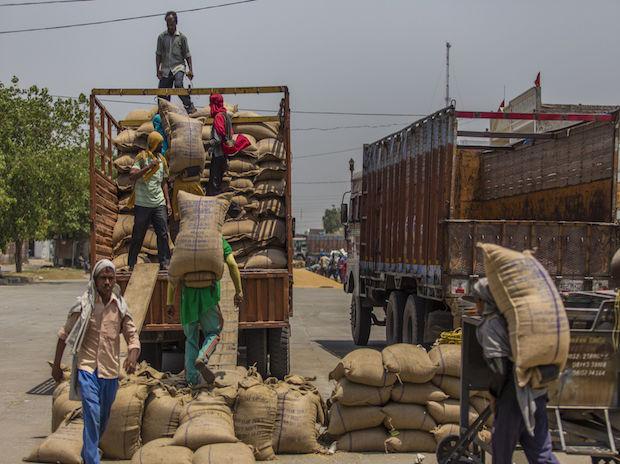India’s surprise ban on wheat exports has prompted rice traders to increase their purchases and place unusual orders for longer-term deliveries amid fears the world‘s top rice exporter may also limit such shipments , four exporters told Reuters.
Over the past two weeks, traders have signed contracts to export 1 million tonnes of rice for June-September shipments and are opening Letters of Credit (LC) soon after the agreements are signed to ensure that the contracted quantity will be sent even if India restricts exports, people said.
These forward purchases come on top of around 9.6 million tonnes of rice already shipped out of India this year – in line with record 2021 shipments – and could reduce the amount of grain available to other buyers over the next few years. months as loading schedules fill up.
“International traders have pre-booked for the next three to four months and everyone has opened LCs to ensure business continuity,” said Himanshu Agarwal, executive director of Satyam Balajee, the largest rice exporter. Indian.
Normally, traders sign agreements for the current month and the following month.
Aggressive buying from India could also reduce demand for rice from Vietnam and Thailand, the world’s second- and third-largest exporters respectively, which are struggling to compete on price.
WHEAT BAN
India last month banned wheat exports in a surprise move, days after saying it was aiming for record shipments this year.
He also put a cap on sugar exports.
India is not one of the world’s leading wheat exporters, but it is the world’s second largest sugar exporter behind Brazil.
These export restrictions have led to speculation that India may also cap rice shipments, although government officials have said India does not plan to do so as it has sufficient rice stocks. and that local prices are lower than the support prices set by the State.
India’s wheat ban trapped a large amount of grain in ports because New Delhi only allowed LC-backed contracts to leave.
“Normally people open LCs when they name a vessel. This time they opened LCs for all pending rice contracts, so if there is an export ban, at least the contracted quantity is shipped” , Agarwal said.
India accounts for more than 40% of world rice trade.
PRICE ADVANTAGE
Foreign buyers are looking for Indian rice because it is much cheaper than its rivals, said BV Krishna Rao, chairman of the All India Rice Exporters Association.
India’s 5% off-white rice is offered at $330-$340 per ton on a free-on-board (FOB) basis, which is significantly lower than Thailand’s $455-460 and Vietnam’s $420-425, said the dealers.
Thailand and Vietnam are unable to compete with India and are trying to explore ways to support prices, the Thai government said.
If India restricts exports, world prices could jump sharply, said a New Delhi-based dealer with a global trading house.
“Indian rice is more than 30% cheaper than other destinations. Poor buyers in Asia and Africa would be forced to pay very high prices if India restricted exports. That is why there is a rush to buy Indian rice,” the dealer said.
Bangladesh, China, Benin, Cameroon, Nepal, Senegal and Togo are the main buyers of Indian non-basmati rice, while Iran and Saudi Arabia are the main buyers of premium basmati rice .
India exported a record 21.5 million tonnes of rice in 2021, compared to combined exports of 12.4 million tonnes by Vietnam and Thailand.
Panic buying by importing countries was expected after ban rumors started circulating as no other country can replace Indian shipments, said a Mumbai-based dealer with a global trading company.
(Reporting by Rajendra Jadhav; Additional reporting by Naveen Thukral in Singapore; Editing by Gavin Maguire and Jamie Freed)
(This story has not been edited by Business Standard staff and is auto-generated from a syndicated feed.)

